That's two questions: how to perform complex calculations, and how to understand concepts intuitively.
The best way to learn how to perform complex calculations is by practice. There is no royal road or secret sauce to getting that level of facility. Eventually, you start to see several steps of calculations group together into what feels like a single step. Psychologists call this "chunking." (In fact, chances are you have already experienced that to some degree, whether in the context of mathematics or elsewhere.)
How to understand concepts intuitively? I don't know how Feynman did it, but I find a couple techniques useful:
1. First, taking a cue from Feynman, I always thought about how to explain something I'm learning to someone who is below my skill level. Feynman once quipped that if you can't explain something to a college freshman, you don't understand it. That didn't do me much good as a college freshman, so I would always think about how I'd explain a concept to my mom. (To be sure, my mom did not have any special science or engineering background.)
2. What might be about the same thing, I would always try to digest whatever I'm learning through a series of less-and-less blurry lenses. If you spent, say, a week studying something, think about what you'd tell someone if you only had a day to tell them what you had learned that week. Or what you'd tell them if you only had an hour. Or only ten minutes.
You find that there are different levels of abstraction, and they're all useful to have "pre-loaded." So even if you forget the fine details, you can recover them rapidly if you have explicitly worked out some base layer of understanding.
-----
What follows was written in response to the question "How can I learn to think like Richard Feynman?" -- i.e., before the question was clarified. Keeping it in, because... why not. I already wrote it. :)
You can't. Sorry to disappoint, but there is no mechanical formula to becoming a genius -- let alone "no ordinary genius," as Dyson described Feynman.
But there are some traits that Feynman had that you can work on emulating, to your advantage (... at least in my opinion). In what follows, I'm going to say a lot of things about Feynman in a very factual tone -- i.e., he did this, or didn't dothat. To be sure, I have no special insight here... I didn't know him, I didn't play with his kids, etc. These are all just what I've gleaned from his biographies, etc.
1. Feynman was driven by curiosity and enthusiasm.
He didn't do the things he did because he was good at them, or because they paid well, or because they paid well, or were otherwise means to an end. He did them because he wanted to do them.
If you love physics, then studying physics all day isn't work. It doesn't leave you exhausted, it leaves you energized.
2. Feynman was honest with himself...
If there was something he didn't understand, he wouldn't try to convince himself that it was unimportant, or otherwise try to avoid that fact. He would acknowledge it, head on.
3. ... and others.
Okay, maybe he wasn't 100% honest with others -- there are plenty of stories about his mischief. But he was intellectually honest with others. He famously "didn't care what other people think" about him. If he had a question or a thought that he felt was helpful to express, he expressed it... without regard to how that made him look.
4. He had simultaneous respect and contempt for those who came before him.
He respected those who came before him, in the sense that he would learn what he could from the "greats" of the previous generation. But he would take all information at face value. If he didn't agree with or like a proposition, he didn't agree with it or like it... regardless of whether that proposition came from an acknowledged expert in such propositions.
I'm sure there are other critical qualities, but in my mind those are some of the more important ones he possessed. Working on attaining these qualiti
es won't win you a Nobel Prize, but maybe it's a start.
The Feynman Technique: The Best Way to Learn Anything
READING TIME: 3 MINUTES
There are four simple steps to the Feynman Technique, which I’ll explain below:
- Choose a Concept
- Teach it to a Toddler
- Identify Gaps and Go Back to The Source Material
- Review and Simplify (optional)
***
If you’re not learning you’re standing still. So what’s the best way to learn new subjects and identify gaps in our existing knowledge?
Two Types of Knowledge
There are two types of knowledge and most of us focus on the wrong one. The first type of knowledge focuses on knowing the name of something. The second focuses on knowing something. These are not the same thing. The famous Nobel winning physicist Richard Feynman understood the difference between knowing something and knowing the name of something and it’s one of the most important reasons for his success. In fact, he created a formula for learning that ensured he understood something better than everyone else.
It’s called the Feynman Technique and it will help you learn anything faster and with greater understanding. Best of all, it’s incredibly easy to implement.
“The person who says he knows what he thinks but cannot express it usually does not know what he thinks.”
— Mortimer Adler
There are four steps to the Feynman Technique.
Step 1: Teach it to a child
Take out a blank sheet of paper and write the subject you want to learn at the top. Write out what you know about the subject as if you were teaching it to a child. Not your smart adult friend but rather an 8-year-old who has just enough vocabulary and attention span to understand basic concepts and relationships.
A lot of people tend to use complicated vocabulary and jargon to mask when they don’t understand something. The problem is we only fool ourselves because we don’t know that we don’t understand. In addition, using jargon conceals our misunderstanding from those around us.
When you write out an idea from start to finish in simple language that a child can understand (tip: use only the most common words), you force yourself to understand the concept at a deeper level and simplify relationships and connections between ideas. If you struggle, you have a clear understanding of where you have some gaps. That tension is good –it heralds an opportunity to learn.
Step 2: Review
In step one, you will inevitably encounter gaps in your knowledge where you’re forgetting something important, are not able to explain it, or simply have trouble connecting an important concept.
This is invaluable feedback because you’ve discovered the edge of your knowledge. Competence is knowing the limit of your abilities, and you’ve just identified one!
This is where the learning starts. Now you know where you got stuck, go back to the source material and re-learn it until you can explain it in basic terms.
Identifying the boundaries of your understanding also limits the mistakes you’re liable to make and increases your chance of success when applying knowledge.
This is invaluable feedback because you’ve discovered the edge of your knowledge. Competence is knowing the limit of your abilities, and you’ve just identified one!
This is where the learning starts. Now you know where you got stuck, go back to the source material and re-learn it until you can explain it in basic terms.
Identifying the boundaries of your understanding also limits the mistakes you’re liable to make and increases your chance of success when applying knowledge.
Step 3: Organize and Simplify
Now you have a set of hand-crafted notes. Review them to make sure you didn’t mistakenly borrow any of the jargon from the source material. Organize them into a simple story that flows.
Read them out loud. If the explanation isn’t simple or sounds confusing that’s a good indication that your understanding in that area still needs some work.
Read them out loud. If the explanation isn’t simple or sounds confusing that’s a good indication that your understanding in that area still needs some work.
Step 4 (optional): Transmit
If you really want to be sure of your understanding, run it past someone (ideally who knows little of the subject –or find that 8-year-old!). The ultimate test of your knowledge is your capacity to convey it to another.
***
Not only is this a wonderful recipe for learning but it’s also a window into a different way of thinking that allows you to tear ideas apart and reconstruct them from the ground up. (Elon Musk calls this thinking from first principles.) This leads to a much deeper understanding of the ideas and concepts. Importantly, approaching problems in this way allows you to understand when others don’t know what they are talking about.
Feynman’s approach intuitively believes that intelligence is a process of growth, which dovetails nicely with the work of Carol Dweck, who beautifully describes the difference between a fixed and growth mindset
It is said that you can use the Feynman Technique to learn anything, and that's exactly what I did. I used this simple method to re-learn how to study at the college level. Here's a look at the technique and how it works.
Improving Study Methods
The act of studying for a test, quiz, or just reviewing homework assignments and lessons can be difficult for some of us. Techniques that worked in elementary school don't always work in high school. Likewise, as I discovered, study habits and note-taking that seemed to be just fine for high school didn't make the cut when I entered college. I needed a new study method for my college courses, and I found a successful approach using the Feynman Technique.
What is the Feynman Technique?
The Feynman Technique is a four step learning technique, or method, developed by American physicist and Nobel Prize in physics winner Richard P. Feynman. Known as the 'Great Explainer,' Feynman used simple terms and illustrations to explain complex concepts. He was a brilliant yet humble man who understood that not everyone could follow or learn the rules of physics or even basic science and math just by reading or listening to a concept's explanation. Feynman recognized the need to teach in more simple and easy to understand terms so that someone totally new to an area of study could learn, understand and retain the new information. The idea was developed into the Feynman Technique, which can help students understand and retain information learned.
 |
Four Steps to the Feynman Technique
Once I read about the Feynman Technique in James Gleick's book: Genius: The Life and Science of Richard Feynman, I realized that the key to studying, understanding, and becoming an overall better student was to simplify. In the past I had spent hours trying to memorize history notes, math equations, and even grammar rules only to end up barely passing the weekly quizzes and end of semester exams. I was done doing things the hard way and figured I would give this technique a shot. So here's how I used the Feynman Technique and surprisingly saw my grades improve.
College Statistics was one of my more difficult courses. I was very concerned about missing major points and concepts shared by the professor in class. Because of this anxiety, I decided that my note-taking would simply consist of writing down everything the professor was saying. When it came time to study for a test, all I had was a transcript of the lecture without any clue as to what it meant. This is where the Feynman Technique came in. It taught me how to re-think the way I study.
Step One: Write Down the Concept You Want to Learn
The first step of the Feynman Technique is to write down the concept you wish to learn about and then record everything you find relating to that topic. For me, the main concept involved a group of concepts known best as basic statistical concepts. Without a simple grasp of these principles I wouldn't be able to succeed in my statistics course. I started with one concept at a time. The first was population parameters. I grabbed a notebook and wrote out the textbook definition, which states that a population parameter is 'a quantity or statistical measure that, for a given population, is fixed and that is used as the value of a variable in some general distribution or frequency function to make it descriptive of that population.'
 |
Step Two: Teach/Explain the Concept in your Own Terms
Teaching a concept clearly requires excellent understanding; if one is unable to teach it, it's not fully understood. In this case, step two of the Feynman Technique required re-writing the definition in my own words in order to grasp and communicate it. The standard definition was a little confusing so I did more research to figure out exactly what it was talking about. This involved breaking down the term into two terms: population and parameter. I discovered that a population is 'all the members of a specified group' and a parameter is 'a characteristic used to describe the population.' In other words (meaning my own words), a population parameter is a set description of the particular group being studied.
Step Three: If Your Explanation Feels Shaky, Go Back to the Books
The third step of the study technique gives you the opportunity to explain the concept to yourself and take a look at areas that still sound a little shaky or don't quite make sense. This involves additional research and even re-writing definitions. After all, the point of Feynman's Technique is to be able to explain a complex concept in simple terms that anyone (including yourself) can understand. This is where I went back to the first definition, re-read it, and then took another look at the definition in my own words. After a re-examination, I felt confident in moving to step four.
Step Four: Re-Write in Simpler Terms or Use Analogies
In order to ensure my understanding of the concept, I needed to be able to picture it in my mind. I created a hypothetical situation in which the average height of teenage male Americans was being sought. This is a population parameter at its best. The population consists of teenage male Americans and the parameter or measurement being set or searched for is the average height. Discovering the average height of the teenage male American or the parameter of the population can only be done through an educated guess, which is where statistical samples and estimations come in.
 |
Keep it Simple
Using the four steps of the Feynman Technique not only enabled me to obtain a better grasp of population parameters, but it also gave me a better understanding of what statistics is all about. I couldn't have done this on my own. Whether you're learning basic statistics or trying to understand advanced concepts in quantum physics, use the Feynman Technique and remember to keep it simple. With Feynman's method, you can trim down all of the extra study time to just the basics and really learn to grasp, understand and recall the lesson's key concepts.
Keep It Simple, Scientist
The Feynman Technique is a mental model that was coined by Nobel-prize winning physicist Richard Feynman. Known as the "Great Explainer,"Feynman was revered for his ability to clearly illustrate dense topics like quantum physics for virtually anybody. In "Feynman's Lost Lecture: The Motion of Planets Around the Sun," David Goodstein writes that Feynman prided himself on being able to explain the most complex ideas in the simplest terms.
Goodstein once asked Feynman to explain why "spin one-half particles obey Fermi-Dirac." Feynman replied that he'd prepare a freshman lecture on it, but then he came back a few days later empty-handed. "I couldn't reduce it to freshman level," he admitted to Goodstein. "That means we don't really understand it." That is to say, if Feynman couldn't explain something in simple terms, there was a problem with the information, not with Feynman's teaching ability.
1959: American physicist Richard Feynman (1918 - 1988) at Cal Tech University
How to Do It
The Feynman Technique is laid out clearly in James Gleick's 1993 biography, "Genius: The Life and Science of Richard Feynman." In the book, Gleick explains the method in terms of how Feynman mastered his exams at Princeton University: "He opened a fresh notebook. On the title page, he wrote: NOTEBOOK OF THINGS I DON'T KNOW ABOUT. For the first but not last time he reorganized his knowledge. He worked for weeks at disassembling each branch of physics, oiling the parts, and putting them back together, looking all the while for the raw edges and inconsistencies. He tried to find the essential kernels of each subject." This is the first part of his process, but let's take a look at all four steps:
1. Pick a topic you want to understand and start studying it. Write down everything you know about the topic on a notebook page, and add to that page every time you learn something new about it.
2. Pretend to teach your topic to a classroom. Make sure you're able to explain the topic in simple terms.
3. Go back to the books when you get stuck. The gaps in your knowledge should be obvious. Revisit problem areas until you can explain the topic fully.
4. Simplify and use analogies. Repeat the process while simplifying your language and connecting facts with analogies to help strengthen your understanding.
The Feynman Technique is perfect for learning a new idea, understanding an existing idea better, remembering an idea, or studying for a test. We weren't kidding when we said it was good for anything. How would you use this technique?
Get stories like this one in your inbox each morning. Sign up for our daily email here.
If you liked this article, check out the book "Surely You're Joking, Mr. Feynman!" by Richard Feynman himself. The audiobook is free with a 30-day trial of Audible. We handpick reading recommendations we think you may like. If you choose to make a purchase through that link, Curiosity will get a share of the sale.
Learning From the Feynman Technique
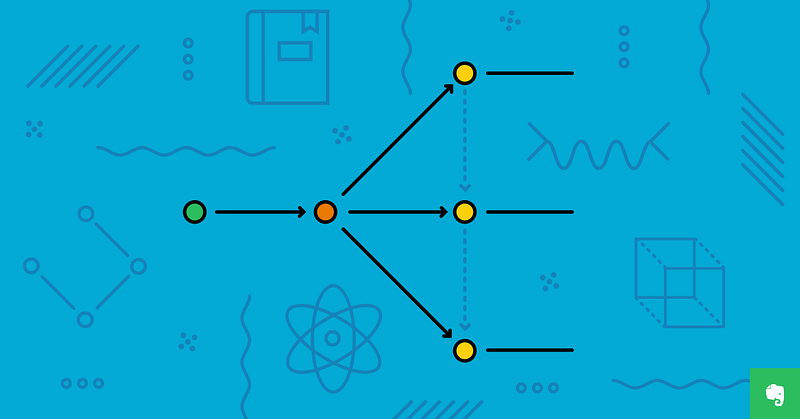
They called Feynman the “Great Explainer.”
Richard Feynman (1918–1988), an author, graphic novel hero, intellectual, philosopher, physicist, and No Ordinary Genius is considered to be one of the most important physicists of all time.
- He pioneered an entire field: quantum electrodynamics (QED).
- In the 1940s, his invention of the Feynman Diagram helped bring much-needed visual clarification to the enigmatic behavior of subatomic particles.
- His work helping scientists understand the interaction of light and matter earned him a share of a Nobel Prize in 1965.
- His work has directly influenced the fields of nanotechnology, quantum computing, and particle physics.
- In 1986, his research and explanations were critical in helping to understand the cause of the space shuttle Challenger disaster.
In addition to his groundbreaking research, Feynman was brilliant, eloquent, and an exquisitely passionate thinker. In the world of science, he stands unequivocally for his ability to synthesize and explain complex scientific knowledge. His lectures are the stuff of legend — Albert Einstein attended Feynman’s first talk as a graduate student, and Bill Gates was so inspired by his pedagogy that he called Feynman, “the greatest teacher I never had.” Gates purchased the rights to his lectures and made them publicly available on a video portal nicknamed “Tuva” in honor of Feynman’s famous failed quest to reach the Russian region later in his life.
“I do think that making science cool to people when they’re young and therefore getting more people to go into it in an in-depth way, I think that’s very important right now,” Gates said, when announcingthe purchase.
Feynman’s lectures, many of which were delivered during his time at California Institute of Technology, were aimed at students who had no previous knowledge of particle physics or deep science. Taking the mystery out of complex scientific principles was Feynman’s forte. His lectures were underscored by a conviction and passion for science.
If Einstein created the ‘beautiful equation,’ then Feynman brought an unparalleled sense of beauty and romanticism previously absent in the world of scientific research. A vast majority of Feynman’s life was as vividly eccentric and illustrious as the unpredictable movements of the atomic particles that defined his life’s work. When he wasn’t in the throes of researching particle physics, he spent significant time dabbling in the arts, sketching, and even playing the bongo.
The Feynman Technique
Have you ever had a coworker who used business-speak, or had a teacher explain something with language that was difficult to understand?
You’re not alone. The Feynman technique for teaching and communication is a mental model (a breakdown of his personal thought process) to convey information using concise thoughts and simple language. This technique is derived from Feynman’s studying methods when he was a student at Princeton.
At Princeton, Feynman started to record and connect the things he did know with those he did not. In the end, Feynman had a comprehensive notebook of subjects that had been disassembled, translated, and recorded.
In James Gleick’s biography of Feynman, Genius: The Life and Science of Richard Feynman, he recalled his subject’s technique. “He opened a fresh notebook. On the title page he wrote: NOTEBOOK OF THINGS I DON’T KNOW ABOUT. For the first but not last time he reorganized his knowledge. He worked for weeks at disassembling each branch of physics, oiling the parts, and putting them back together, looking all the while for the raw edges and inconsistencies. He tried to find the essential kernels of each subject,” Gleick wrote.
You can use this model to quickly learn new concepts, shore up knowledge gaps you have (known as targeted learning), recall ideas you don’t want to forget, or to study more efficiently. Taking that concept further, you can use this technique to grapple with tough subject matter, which is one of the great barriers to learning.
Feynman’s technique is also useful for those who find writing a challenge. Feynman had an interesting relationship with writing. Instead of committing his knowledge to paper like many other scientific figures, he chose to use speech as the foundation for many of his published works. He dictated most of his books and memoirs, and his scientific papers were transcribed from his lectures.
“In order to talk to each other, we have to have words, and that’s all right. It’s a good idea to try to see the difference, and it’s a good idea to know when we are teaching the tools of science, such as words, and when we are teaching science itself,” Feynman said.
Feynman relied heavily on verbal and spoken communication, and when he turned to his cartoonish diagrams of highly scientific principles, for example, he could tap into ideas with shapes, squiggly lines, and drawings. It stripped away clunky language and allowed the power of verbal storytelling to take root.
Explaining the essentials of particle physics is extremely difficult. Before Feynman’s diagrams that earned him a Nobel Prize, there wasn’t a clear way to explain their meaning.
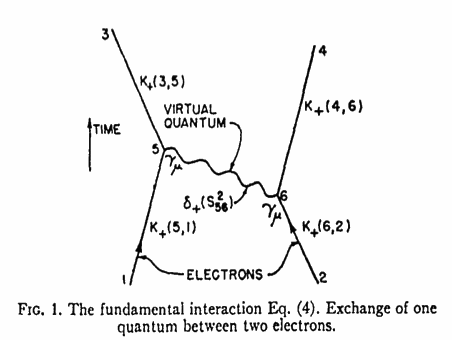
This is the first-ever published diagram by Feynman helped scientists track particle movements in illustrations and visual equations rather than verbose explanations. What seemed almost improbable at the time is now one of the greatest explanations of particle physics — the squiggly lines, diagrams, arrows, quarks, and cartoonish figures are now the established nomenclature and visual story that students, scientists, and readers will see when they learn about this field of science.
Essentially, the Feynman Technique is this:
1. Identify the subject
Write down everything you know about the topic. Each time you run into new sources of information, add them to the note.
2. Teach it to a child
If you can teach a concept to a child, you’re way ahead of the game.
Start with a blank note and write the topic or subject you want to teach. Then, below that topic, write everything you know about it. But, the trick is to write it plainly and simply — so that a child can understand what you’re talking about.
Doing this takes into consideration a few things:
Speaking in plain terms: Children don’t understand jargon or a lexicon of dense vocabulary. Science is full of complex terminology, which is the reason Feynman’s diagrams became so valuable. His charts illustrated things that other scientists delivered marathon lectures about.
When we speak without jargon, it frees us from hiding behind knowledge we don’t have. Big words and fluffy “business speak” cripples us from getting to the point and passing knowledge to others.
Brevity: The attention span of a child requires you to deliver concepts as if you were pitching a business idea during one short elevator ride. You better get the concept out before those doors open. Children also don’t have the ability — or mental capacity, to understand anything longer than that.
If you had difficulty putting thoughts into your note, that shows you have room to improve. This is also where the power of creativity can help you reach new heights in learning.
For Feynman, much of the pleasure in science was in this first step — unraveling his levels of understanding.
3. Identify your knowledge gaps
This is the point where the real learning happens. What are you missing? What don’t you know?
Highlighting knowledge gaps will help you when you collect and organize your notes into a cohesive story (which is the next step.) Now you can call upon your source material (lecture notes, ideas, etc.) when you run into questions about how much you do know about your topic.
If you don’t know something, hit the books. Go back to the source material and compile information that will help you fill in the cracks.
4. Organize + simplify + Tell a story
Start to tell your story. Piece together your notes and begin to spin a tale using concise explanations. Bring the most vital pieces of your knowledge about the topic together.
Practice reading your story out loud. Pretend to tell the story to a classroom of students. That way, you’ll hear where language stops being simple. Stumbles could indicate incomplete thoughts.
Use analogies and simple sentences to strengthen your understanding of the story.
This sentence, written by Feynman, encapsulates the power of this technique. What started as a question about our existence has been translated into a single sentence that can be understood by a middle school student.
“All things are made of atoms — little particles that move around in perpetual motion, attracting each other when they are a little distance apart, but repelling upon being squeezed into one another.”
Basically, Feynman says that if you know nothing about physics, the most essential scientific knowledge to understand is that everything is made up of atoms. In one simple sentence, Feynman conveys the foundational existence of our universe. It’s a master class not just for scientists, but for writers of any stripe. Get to the hypothesis in as few words as possible. Avoid clunky, verbose language.
Drawing on passions
Feynman was a believer in a multi-disciplinary approach to learning and found connections to his work in creative outlets like drawing and music. He never stopped asking questions — who, what, and why?
Einstein had his violin. Werner Heisenberg played the piano. Richard Feynman had bongos. And a passion for art. He was able to eloquently communicate, but he could also see the beauty in art, and the stories that art tells. It was as much a distraction as much as it was an unending source of inspiration he could connect to his work in particle physics.
“I wanted very much to learn to draw, for a reason that I kept to myself: I wanted to convey an emotion I have about the beauty of the world. It’s difficult to describe because it’s an emotion. … It’s a feeling of awe — of scientific awe — which I felt could be communicated through a drawing to someone who had also had that emotion. I could remind him, for a moment, of this feeling about the glories of the universe.” — Feynman discussing the intersection of art and science.
Making things stick forever
The next time you stare at an empty notebook page, think about turning that page into an opportunity.
As Feynman illustrates in his mental model, learning can be a lifelong pursuit. This technique is designed to help you study for exams and learn new subjects, but it can be easily adapted to pursue deep work. Dedicating a notebook to a place where your knowledge can grow and evolve your ideas and provide inspiration to continue following a path of ongoing learning critical to the fundamentals of deeper, meaningful work.
Today, researchers are still parsing through Thomas Edison’s notebooks and are constantly learning about how he cataloged his ideas and innovations. For Feynman, after he was done cataloging his knowledge with his technique, he had a comprehensive record of his knowledge that became a notebook he was incredibly proud of.
Armed with the Feynman technique and Evernote, anything is possible. How could you use this technique in your work? Share your story in the comments.
There’s a quote that’s often attributed to Albert Einstein which goes:
“If you can’t explain it simply, you don’t understand it well enough.”
Whether or not Einstein himself actually said this (it’s never been properly sourced, so it’s likely he didn’t), it’s still an insightful observation. It’s also one that yields a pretty powerful study tip when reversed:
If you want to understand something well, try to explain it simply.
By attempting to explain a concept in simple terms, you’ll quickly see where you have a good understanding of that concept. You’ll also be able to instantly pinpoint your problem areas, because they’ll be the areas where you either get stuck or where you end up resorting to using complex language and terminology.
This is the idea behind the Feynman Technique.
Named after the Nobel Prize-winning physicist Richard Feynman – who, in addition to being a brilliant scientist, was also called “The Great Explainer” for his ability to relay complex ideas to others in simple, intuitive ways – the Feynman Technique is a method for learning or reviewing a concept quickly by explaining it in plain, simple language.
In addition to helping you pinpoint those problem areas in the concept you’re trying to learn, the Feynman Technique gives you a quick, efficient way to shore up those areas using targeted learning. It’s a simple technique, but it’ll help you study much more efficiently once you put into action.
So how do you actually use it?
How to Use the Feynman Technique
Since the root of this technique involves explaining the concept, you could execute it in a number of ways – including literally grabbing a friend and explaining to them what you’re learning. However, you don’t always have willing friends at hand, so here’s the simpler method that just involves a sheet of paper.
- Step 1: Grab a sheet of paper and write the name of the concept at the top. You can use pretty much any concept or idea – even though the technique is named after Feynman, it’s not limited solely to math and science.
- Step 2: Explain the concept in your own words as if you were teaching it to someone else. Focus on using plain, simple language. Don’t limit your explanation to a simple definition or a broad overview; challenge yourself to work through an example or two as well to ensure you can put the concept into action.
- Step 3: Review your explanation and identify the areas where you didn’t know something or where you feel your explanation is shaky. Once you’ve pinpointed them, go back to the source material, your notes, or any examples you can find in order to shore up your understanding.
- Step 4: If there are any areas in your explanation where you’ve used lots of technical terms or complex language, challenge yourself to re-write these sections in simpler terms. Make sure your explanation could be understood by someone without the knowledge base you believe you already have.
That’s it!
3 Examples of the Feynman Technique in Action
As I mentioned earlier, simply defining a concept is only half the battle. If you want to explain is clearly, you have to apply it by working through examples.
In the spirit of eating my own dog food, I’ve included three examples of how you might use the Feynman Technique below.
Example #1: The Pythagorean Theorem
We’ll start with a very simple example. The Pythagorean Theorem shows how you can find the length of any right triangle’s hypotenuse:
When I initially started writing this explanation, I simply wrote the sentence at the top and then added the formula.
However, note how the final page has a couple of additions:
- A small picture showing what a right triangle is
- An arrow clarifying the nature of C in the formula
This was my attempt to go back and further simplify the explanation. Even with a basic mathematical theorem like this one, there are still assumptions and terms that encompass ideas that you may not be 100% clear on. Challenge yourself to identify those things and define them.
Example #2: Bayes’ Theorem
Since the Pythagorean Theorem is a pretty simple concept, I thought you might like to see an example using something more complex. Bayes’ Theorem – a concept used in probability theory and statistics – fit the bill nicely.
And here’s a page working through a specific example and using the formula:
These pages do a decent job of explaining Bayes’ Theorem at a very broad level, but I’ll be the first to admit that this is a topic that takes a good long while to truly grasp.
In fact, I had to spend three hours reading through A.I. researcher Eliezer Yudkowsky’s 15,000-word explanation of the theorem before it “clicked” in my brain, so definitely check that article out if you’re curious. You can also check out Arbital’s more recent guide, which is – by Yudkowsky’s own admission – much better and easier to follow.
Example #3: The CSS Box Model
Here’s an example of how the Feynman Technique can be used to review a non-mathematical concept.
The CSS Box Model is a tool for representing the size of HTML elements (i.e. the code that makes up web pages just like the one you’re reading right now), as well as the spacing around them. I chose it as an example because it’s a concept that took me a long time to grasp back when I started learning how to build websites as a teenager.
To clarify that page’s general explanation, here’s an example of an element with specific height, width, margin, padding, and border values written in CSS code:
In addition to writing the code out, I thought it would be extra helpful to show exactly how each attribute affects the overall size of the element.
To a budding web developer, it might not be immediately obvious that, say, a padding value of 10px actually increases the element’s width by 20px overall (because the 10px is applied to each side).
If you happen to be curious about the Box Model and want to learn more, check out this guide.
Think Like a Child
One final tip: While you’re working through the Feynman Technique for any given concept, it can be useful to pretend that you’re explaining that concept to a child.
Doing this will boost your own understanding for one simple reason; in addition asking things like, “Can I have another Oreo?” and “Can I go watch Dragon Ball Z now please?” a kid is probably going ask…
“Why?”
While older people often become accustomed to taking things at face value, kids are naturally curious. They’re quick to point out their confusion.
If you teach a kid how the Pythagorean Theorem works and give him the formula for using it, there’s a good chance he’ll ask you:
“Why does that formula work? How can you know it’ll always work? Prove it, sucka!”
…and then you realize that the kid was actually Mr. T in disguise all along, and now your life depends on being able to explain a geometry concept. How did you even get here?
Seriously, though, this is a great mindset to adopt. Maybe you do know how the Pythagorean Theorem works, and maybe you can easily draw out the proof by rearrangement:
When it comes to other concepts, though, it’s likely that you’re relying on assumptions, heuristics, and other black boxes when it comes to certain details. So adopt a child-like mindset and challenge yourself to clearly explain the whole concept.
Once you’ve done that and worked through all the steps, you can further refine your knowledge of whatever you’re studying with other techniques, including:
Hope this helps!
If you’re unable to see the video above, you can view it on YouTube.
Looking for More Study Tips?
If you enjoyed this article, you’ll also enjoy my free100+ page book called 10 Steps to Earning Awesome Grades (While Studying Less).
The book covers topics like:
- Defeating procrastination
- Getting more out of your classes
- Taking great notes
- Reading your textbooks more efficiently
…and several more. It also has a lot of recommendations for tools and other resources that can make your studying easier.
If you’d like a free copy of the book, let me know where I should send it:
https://collegeinfogeek.com/feynman-technique/




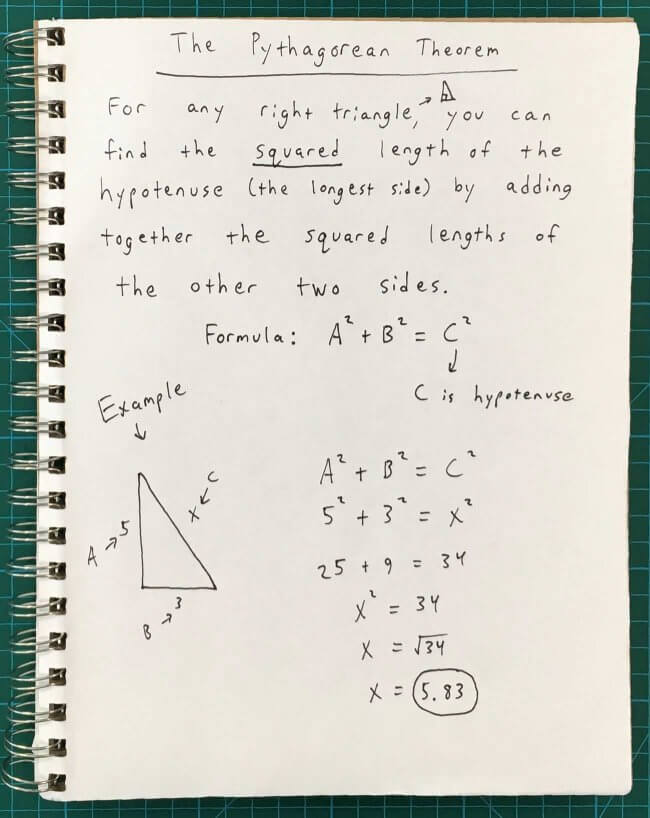
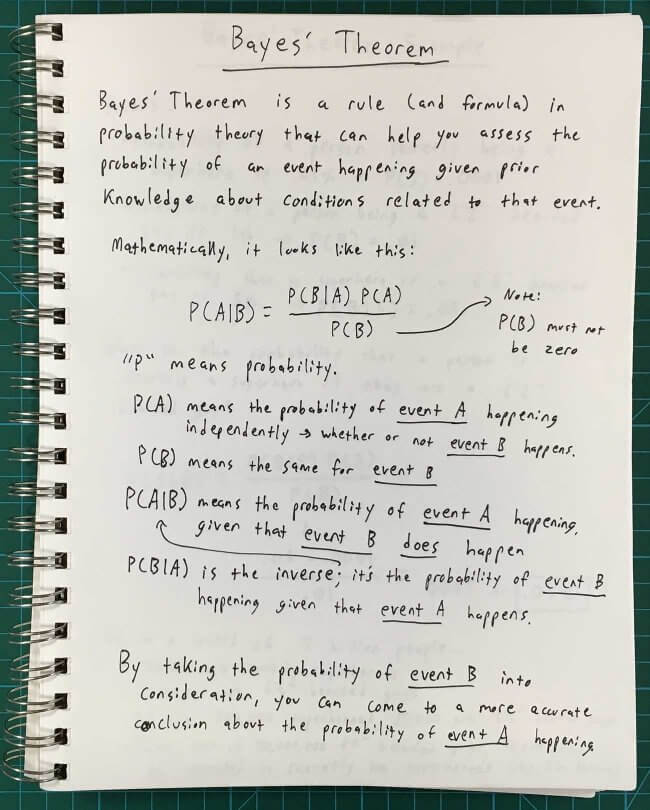
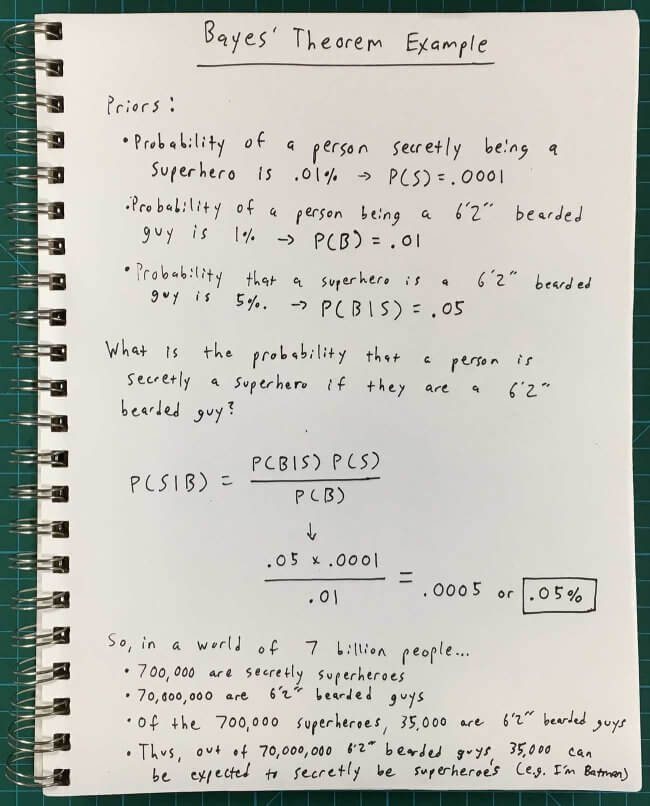
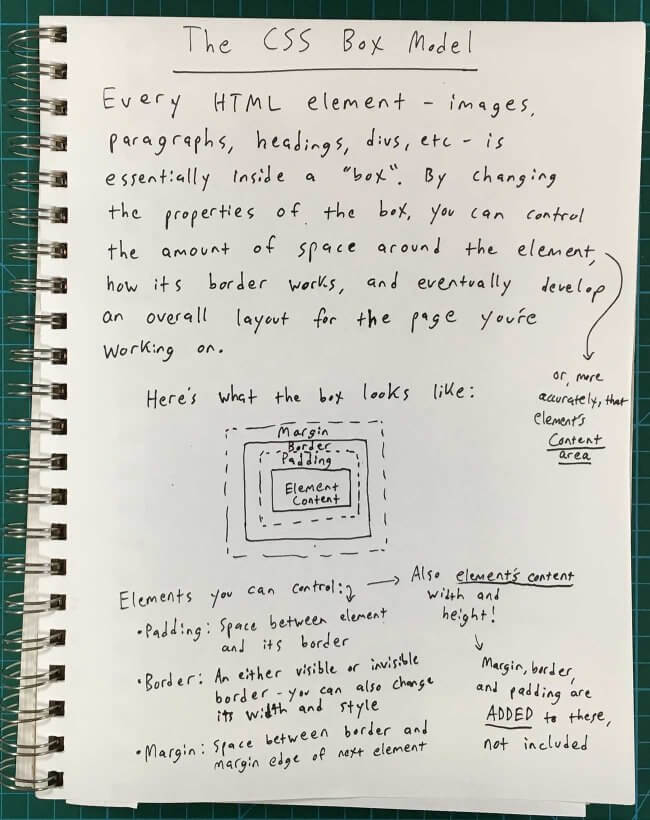

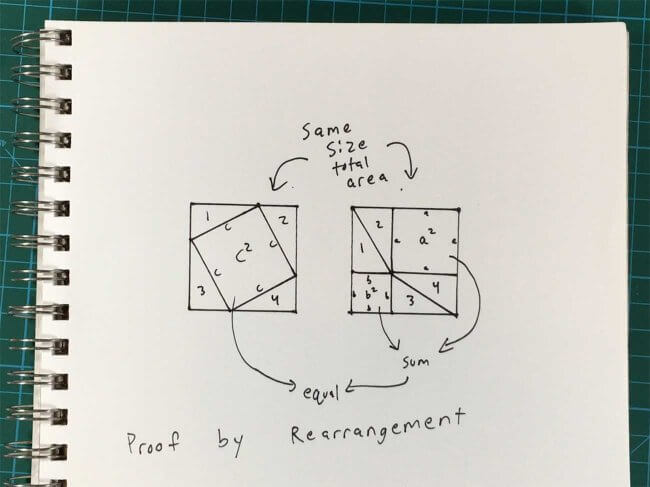


No hay comentarios:
Publicar un comentario